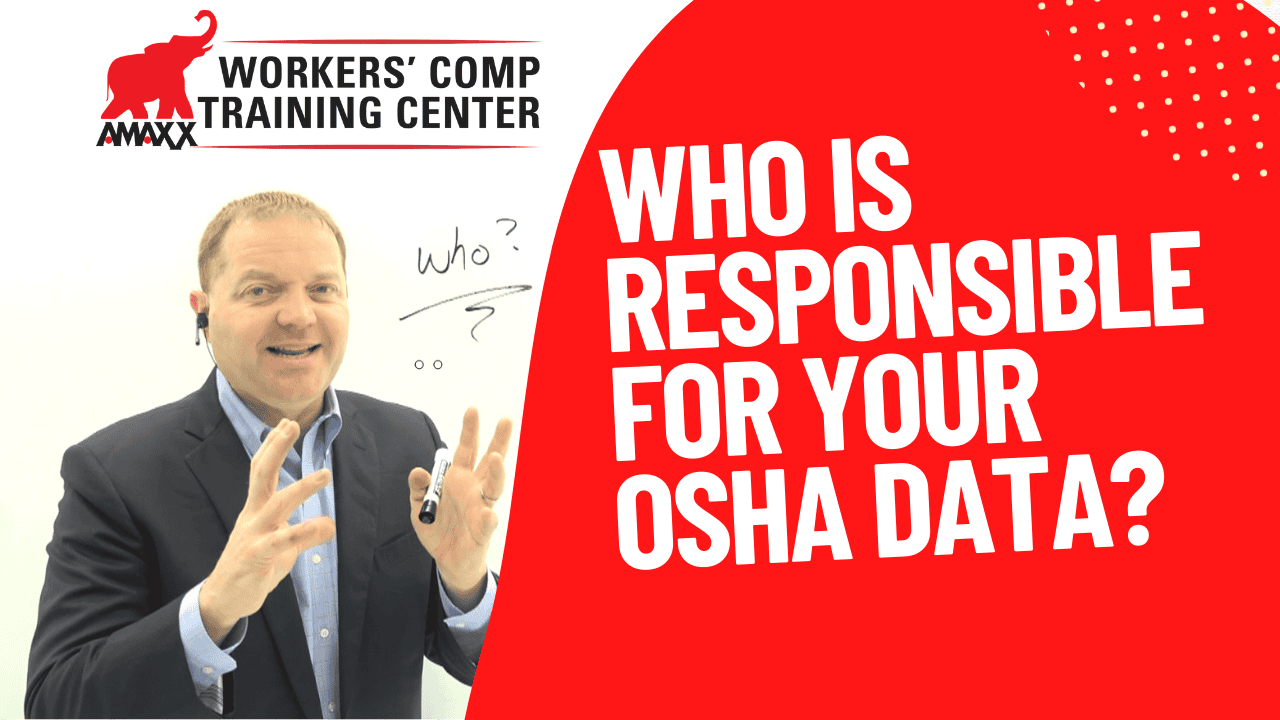This post is one in a 3-part series:
OSHA data can be a significant burden or it can be an asset to your organization. Hello, my name is Michael Stack, CEO of Amaxx.
This is the third in our series in regards to collecting OSHA data and what you’re doing with it. First part of the series, we talked about what is and what is not recordable in terms of OSHA rules and regulations. Second piece, we talked about one of the key indicators, which is your TRIR, your total recordable incident rate, how to calculate it and what to do with it.
Who is Responsible for Your OSHA Data?
This last piece, the third piece of the series here, we’re going to be defining who in your organization is responsible for this information? Who in your organization is responsible for this information? This is something, and I’ve seen a lot of companies just kind of get tripped up on this. It’s kind of like doing your taxes, like they’re do April 15th and you’re doing them like April 14th, and you’re like, oh my gosh, I’ve got to get all these data.
I’ve got all these receipts and got all this stuff, blah, blah, blah, blah, and I’m freaking out. Oh my gosh, I’ve got to get it done because I haven’t been tracking it all along. Same thing happens with OSHA. They’re due beginning of March. OSHA have to send this information in at the beginning of March each year. Who’s responsible for this? And I will tell you the easiest way to do this, particularly if you’re a large organization, is to break it down by location, break it down by location or break it down, particularly by region.
Take the Burden Off One Person
A lot of companies will have different HR regions where you’ve got, okay, this one individual’s responsible for these 15 locations, or 20 locations or 50 locations, or whatever the number is, and then they’re all going to report up, and so if you’ve got someone that’s sort of a hierarchy of who’s responsible for what, it takes the burden off of this one person who’s trying to gather all this information.
It takes the burden off of this one person who’s trying to gather all this information. I talk so much about the team approach in work comp management, the team approach in work comp management. You’ve got an employer, you’ve got a broker, you’ve got an insurance adjuster, you’ve got medical providers, you’ve got attorneys, you’ve got service providers. You’ve got all kinds of people, case managers that are trying to facilitate this injured worker to get them medical treatment they need and get them back to work. Same thing, same concept is very much applicable in regards to collecting this OSHA data who is responsible by region. So now you’ve got multiple people that are collecting data and they can all feed it back into this person, so it takes the burden up so that you’re not freaking out at the end of February that you haven’t done anything.
Team Approach
You’re trying to gather all this data, and it takes a huge amount of time, and it’s a massive process. If you’re doing this throughout the course of the year, you’ve got individuals responsible. You can have that shared team approach and be very effective and make the collection of OSHA data significantly less of a burden and significantly more of an asset. Again, my name is Michael Stack. I’m the CEO of Amaxx. Remember your work today, workers’ compensation can have a dramatic impact on your company’s bottom line, but it will have a dramatic impact on someone’s life, so be great.
Michael Stack, CEO of Amaxx LLC, is an expert in workers’ compensation cost containment systems and provides education, training, and consulting to help employers reduce their workers’ compensation costs by 20% to 50%. He is co-author of the #1 selling comprehensive training guide “Your Ultimate Guide to Mastering Workers’ Comp Costs: Reduce Costs 20% to 50%.” Stack is the creator of Injury Management Results (IMR) software and founder of Amaxx Workers’ Comp Training Center. WC Mastery Training teaching injury management best practices such as return to work, communication, claims best practices, medical management, and working with vendors. IMR software simplifies the implementation of these best practices for employers and ties results to a Critical Metrics Dashboard.
Contact: mstack@reduceyourworkerscomp.com.
Workers’ Comp Roundup Blog: http://blog.reduceyourworkerscomp.com/
Injury Management Results (IMR) Software: https://imrsoftware.com/
©2024 Amaxx LLC. All rights reserved under International Copyright Law.
Do not use this information without independent verification. All state laws vary. You should consult with your insurance broker, attorney, or qualified professional.



